Nghia An Assembly Hall (also known as Ong Pagoda) was established by Chaozhou people who migrated here in the late 18th and early 19th centuries. The ground plan is arranged in the "mouth" (囗) style commonly seen in Chinese temples in the South. The front hall, middle hall and main hall are connected like three emotional spans from the mundane to the sacred. The roof is slightly curved, clearly hierarchical (the middle roof is higher than the two sides). The roof has ceramic statues, ceramic reliefs, and embossed patterns. The top of the roof is "two dragons fighting for a pearl" (*). The main gate's "pavilion" is a pair of stone "lions holding pearls".
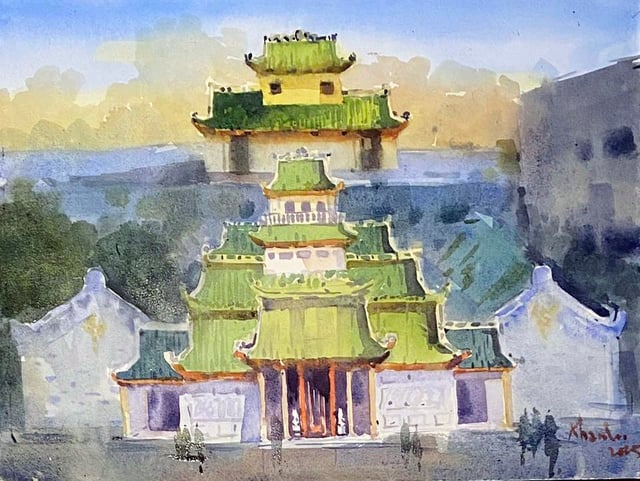
Painting by Architect Nguyen Khanh Vu
Many decorative details on the building are Vietnamized. These are ceramic reliefs of the Southern countryside: thatched roofs, fields, bamboo bushes, gourd trellis, a shepherd riding a buffalo... The statue of Quan Cong also has a Vietnamese appearance: a gentler, calmer face, stylized embroidered armor... The main hall gets diffused light through the skylight (thien tinh) in the middle of the yard, combined with incense smoke, making the space private and deep, creating a feeling of closeness and familiarity like in a Vietnamese village temple. (Temples in Southeast China are often brighter, more colorful, causing a feeling of being overwhelmed).
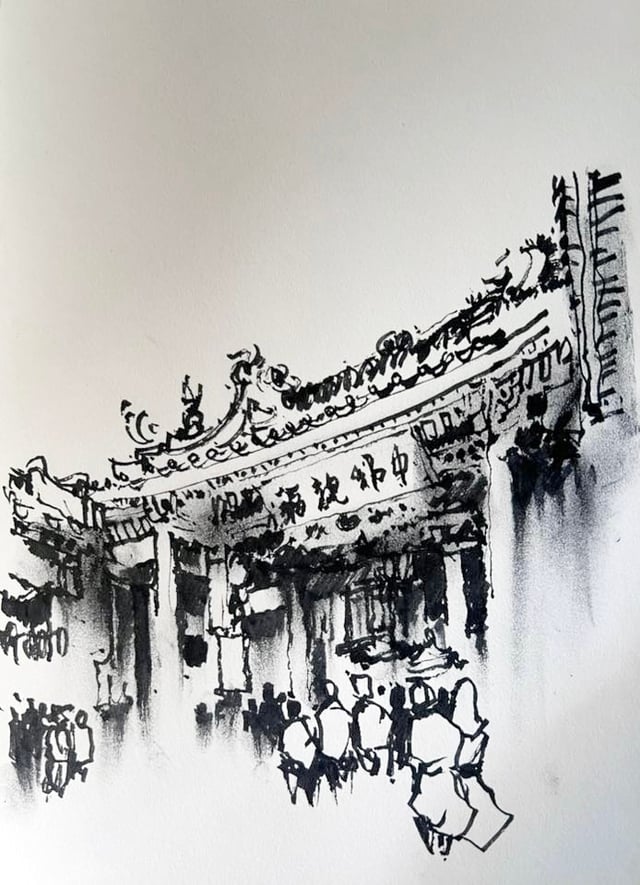
Sketch by Architect Phan Dinh Trung
In front of the temple, there is a statue of General Ma Dau and the Red Hare horse, which is over 2 meters high. There are two unique rituals to dispel bad luck here: crawling under the horse's belly and ringing the bell. Accordingly, the person who wants to dispel bad luck goes around clockwise, crawls under (one to three times) and then stops to bow. After that, they gently ring a small bell (hanging on the horse's neck or on a rope). The Chinese believe that crawling under the Red Hare horse's belly (a symbol of overcoming danger) will dispel bad things. Ringing the bell is to pray for good things to come (khang means both bell and good things, luck).
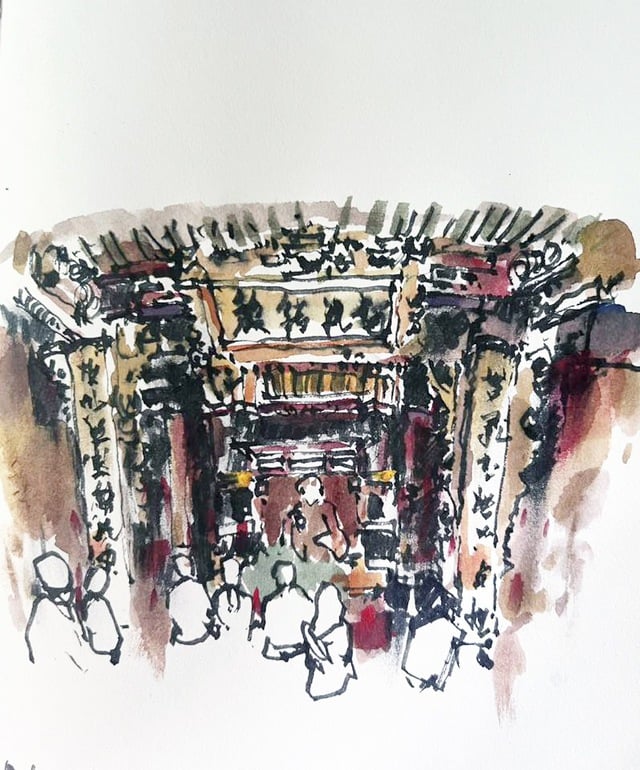
Sketch by Architect Phan Dinh Trung
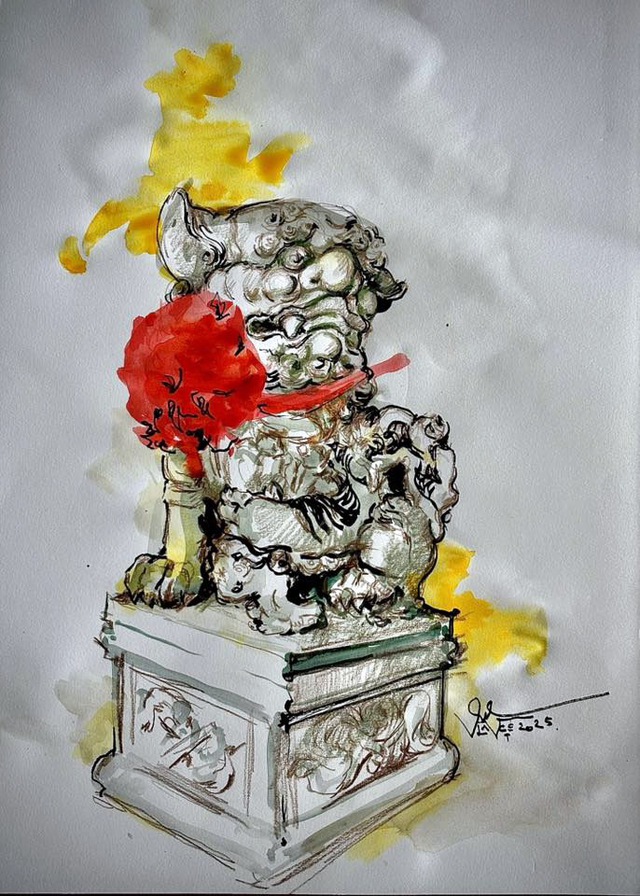
Lion statue - sketch by architect Dang Phan Lac Viet
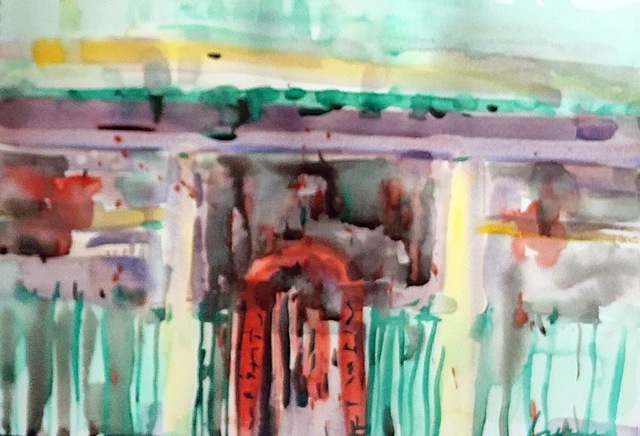
Faded memories - painting by architect Phung The Huy
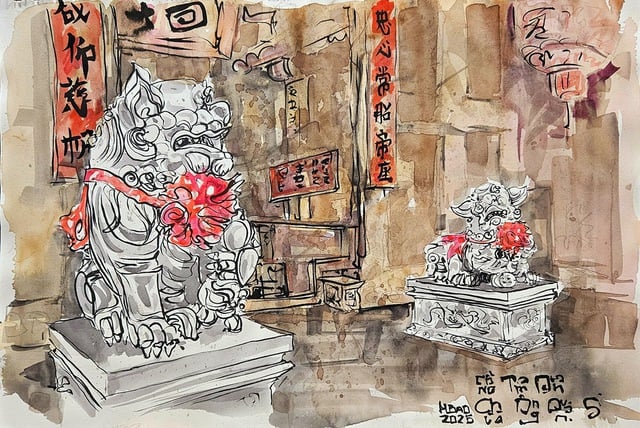
A pair of unicorns holding pearls at the entrance - sketch by architect Bui Hoang Bao
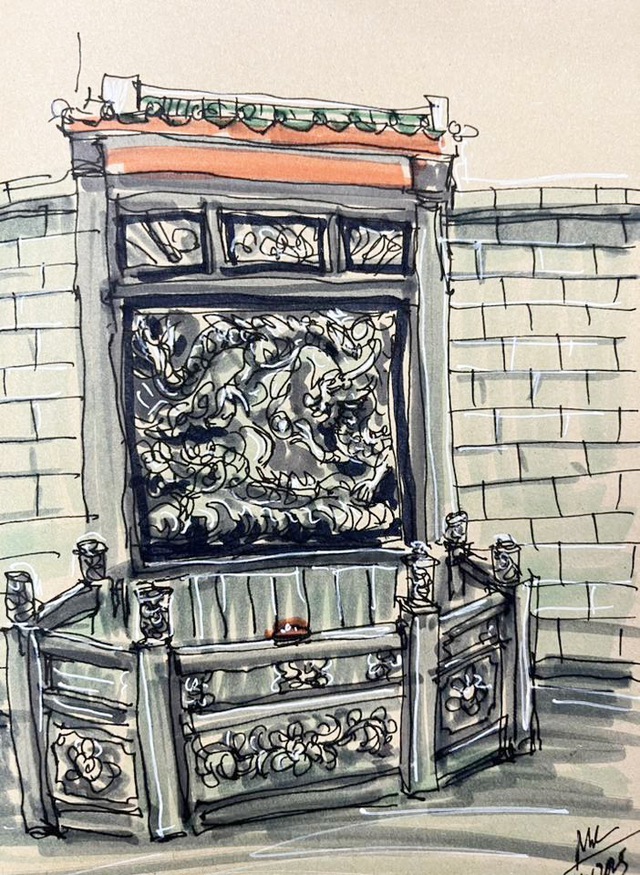
A corner of Ong Pagoda - sketch by artist Tran Binh Minh
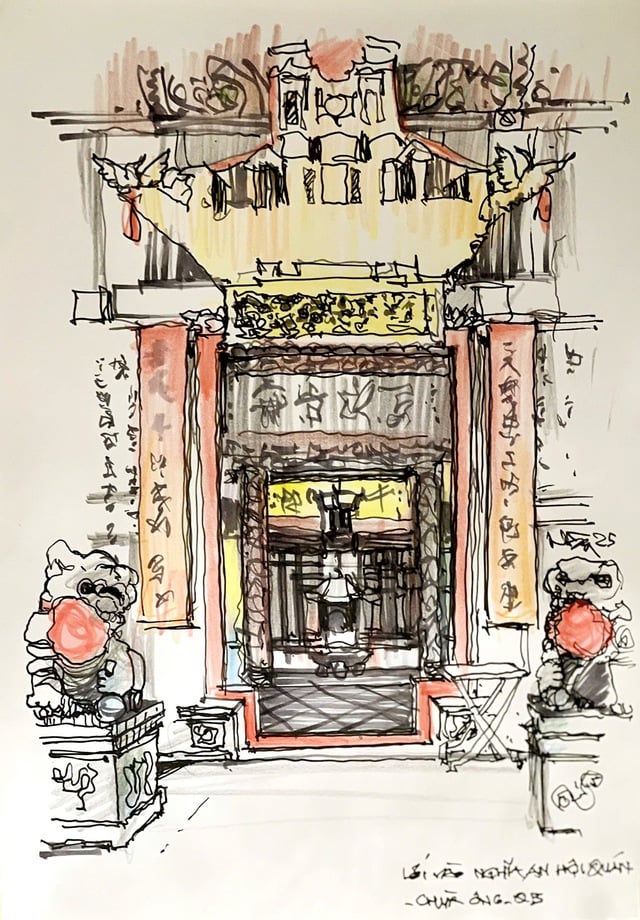
Main entrance - sketch by architect Tran Xuan Hong
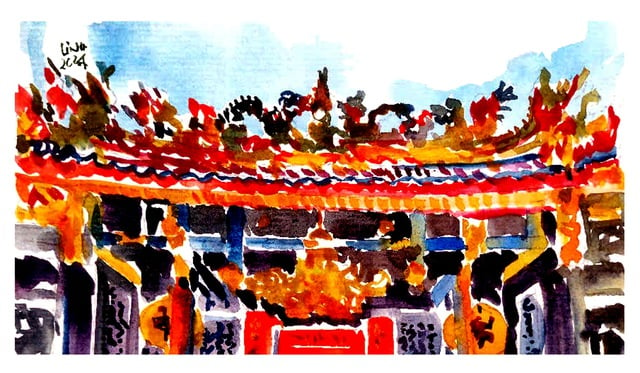
The roof has many ceramic statues, ceramic reliefs, and embossed patterns - sketches by architect Linh Hoang
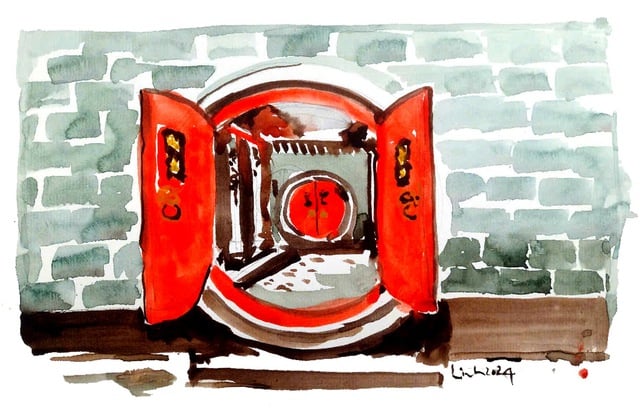
Round door with bold Chinese style - sketch by architect Linh Hoang
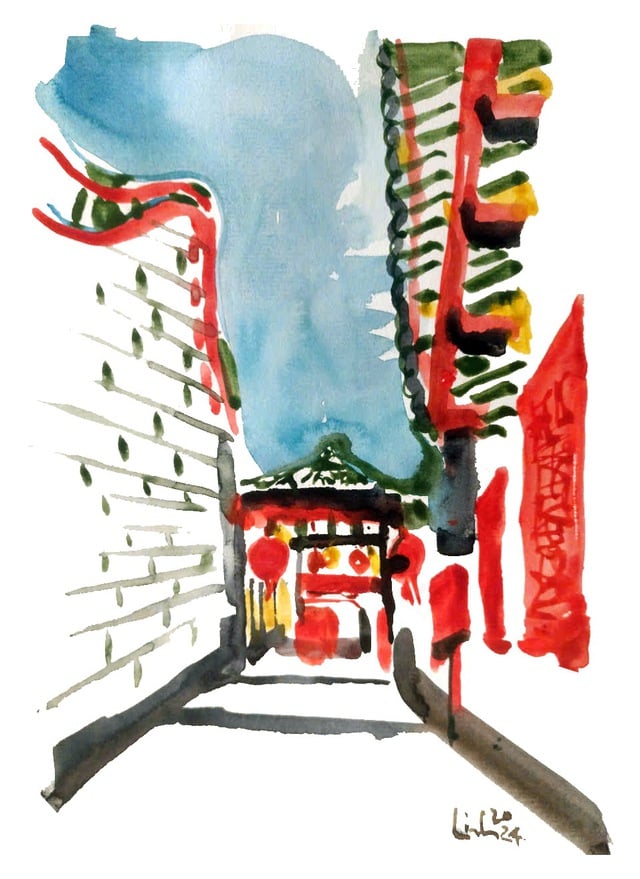
Sketch by Architect Linh Hoang
(*): Two dragons compete for a pearl, symbolizing competition to achieve perfection and the highest value.
Source: https://thanhnien.vn/chua-ong-noi-co-nghi-thuc-chui-bung-ngua-doc-dao-185250503202615941.htm


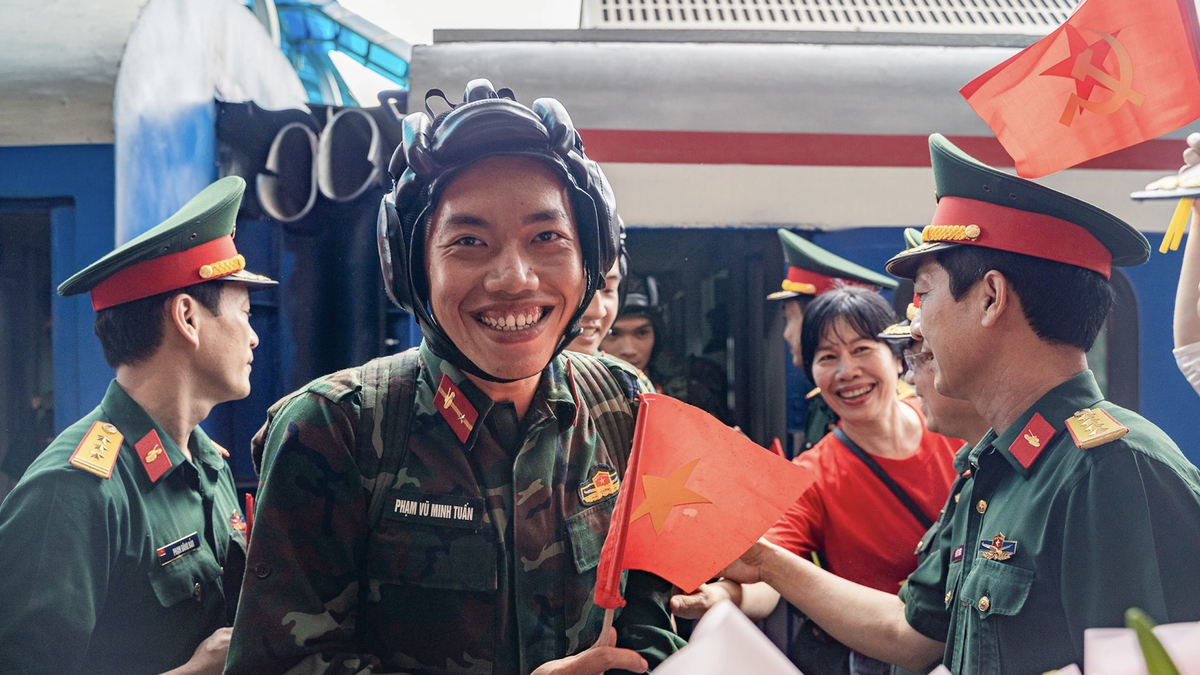
![[Photo] Vietnam shines at Paris International Fair 2025 with cultural and culinary colors](https://vphoto.vietnam.vn/thumb/1200x675/vietnam/resource/IMAGE/2025/5/4/74b16c2a197a42eb97597414009d4eb8)
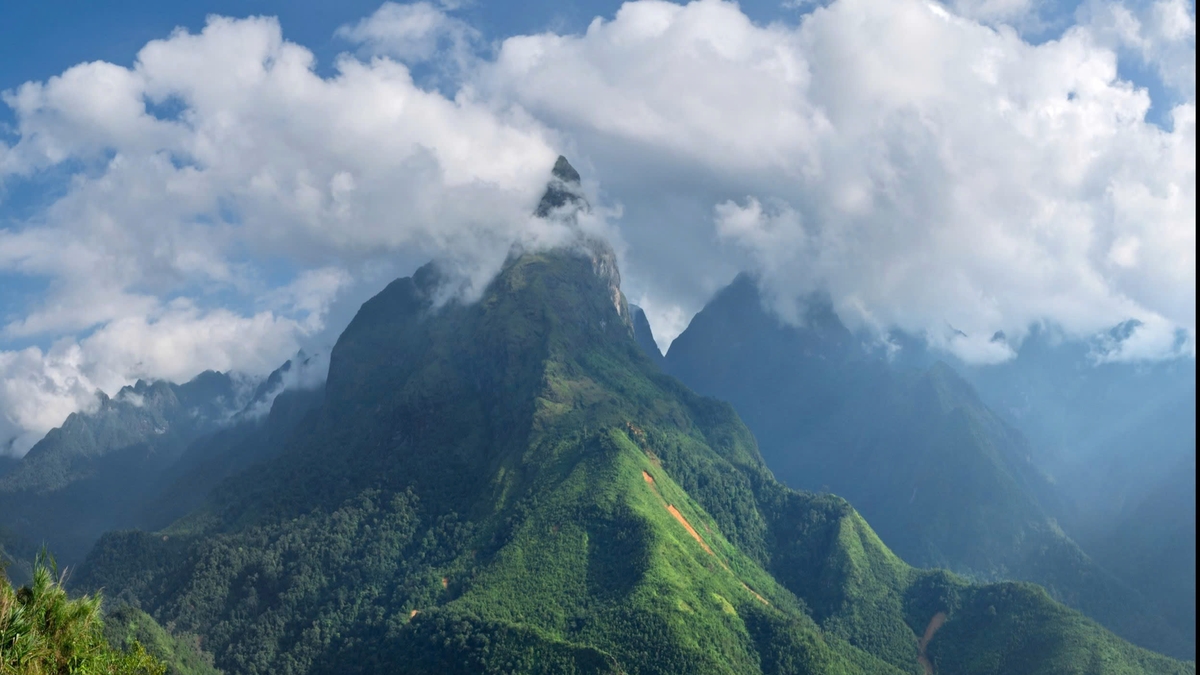
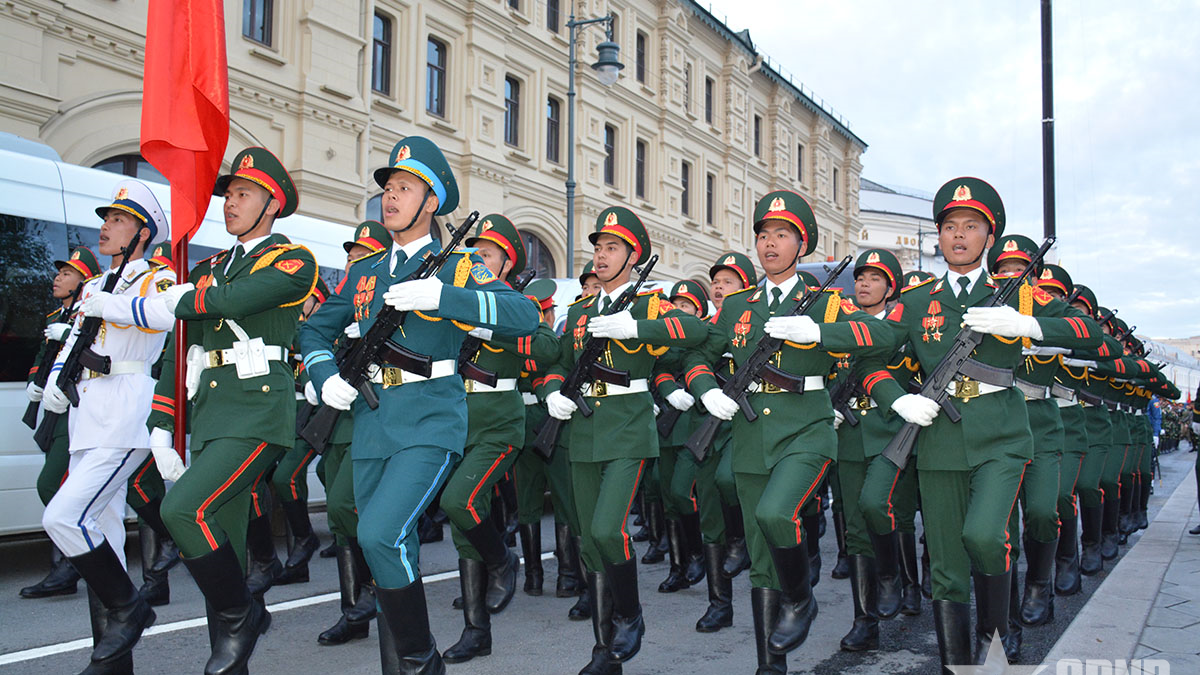
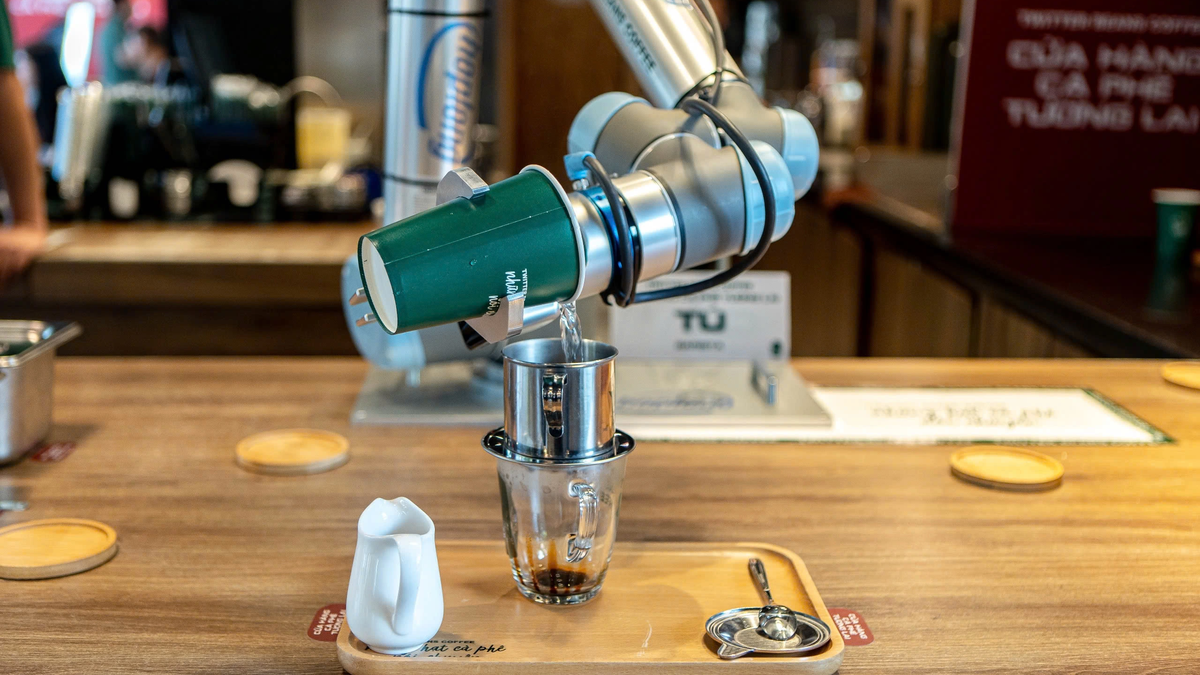
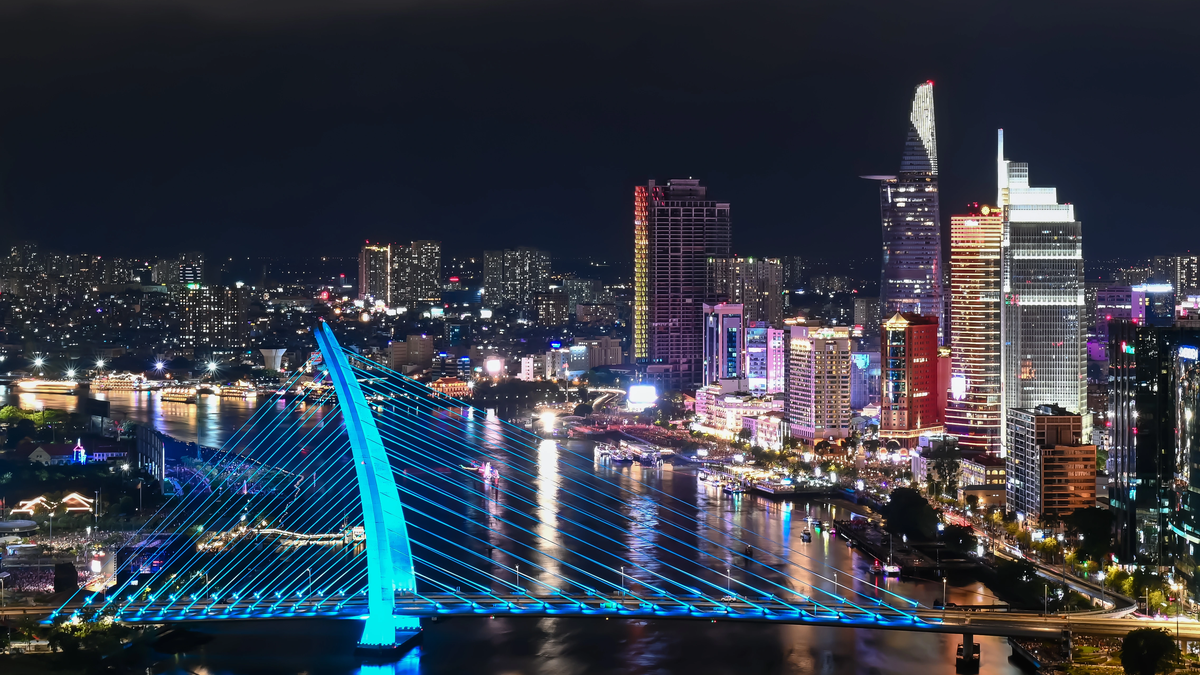
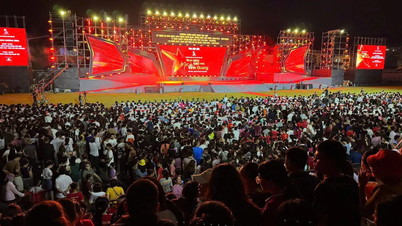



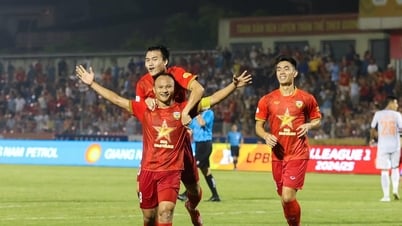
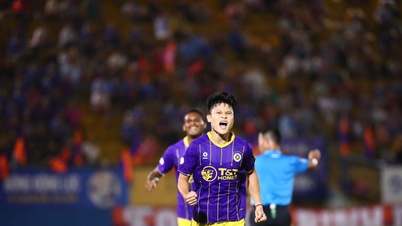




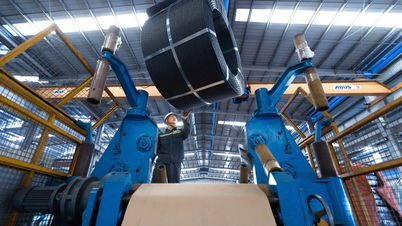
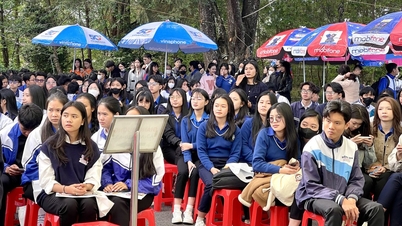
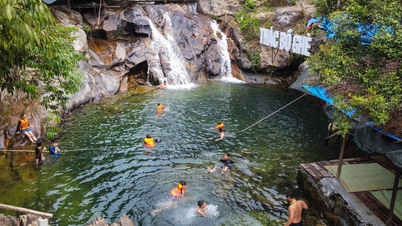

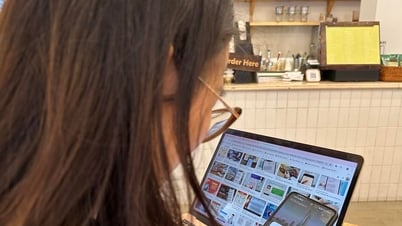

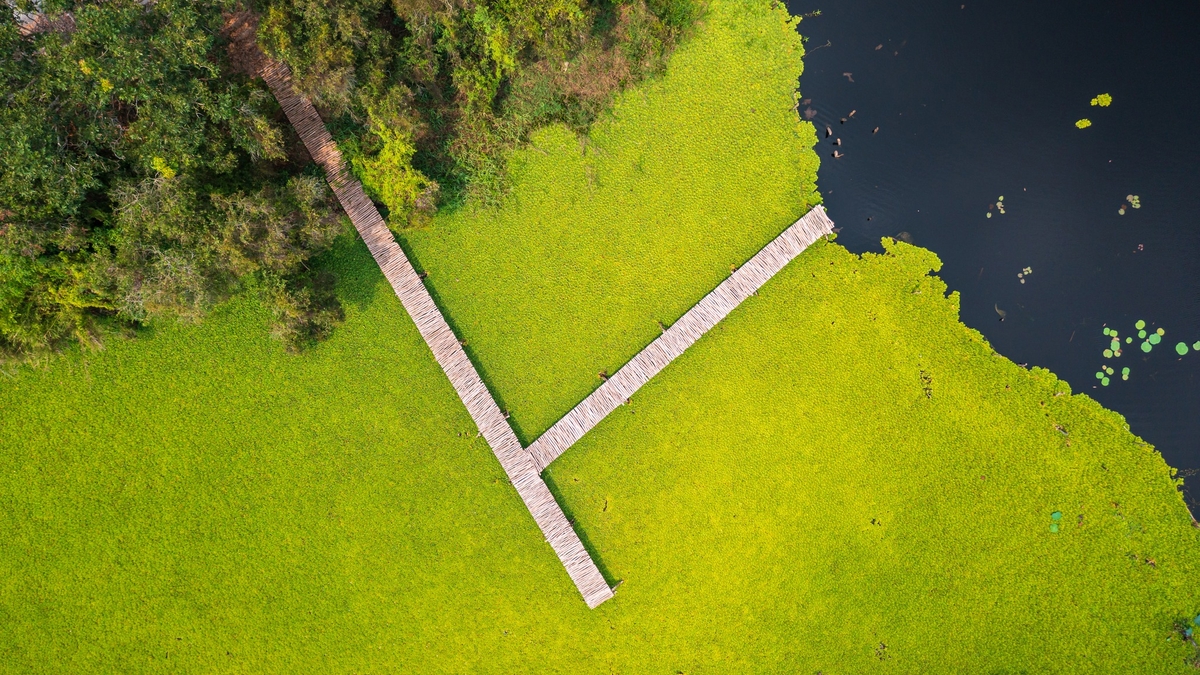



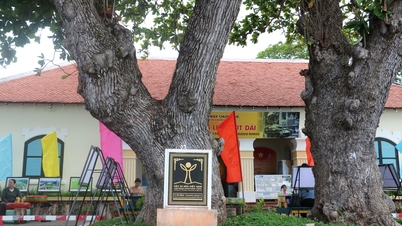

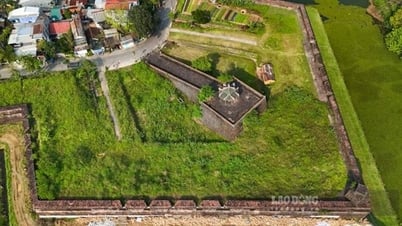






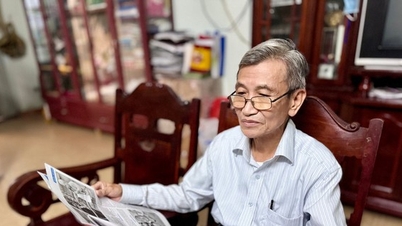
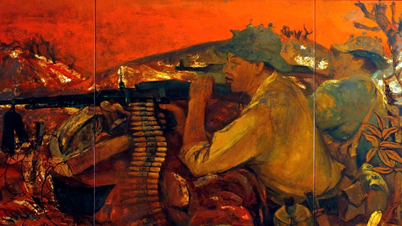

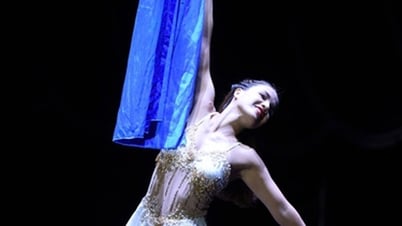





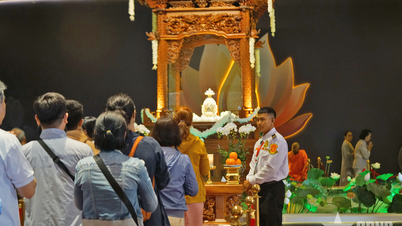
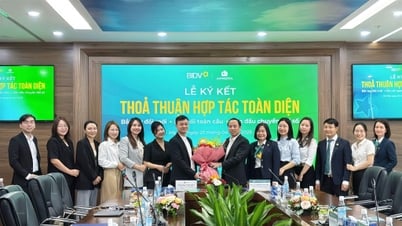

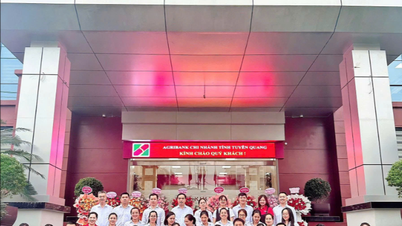


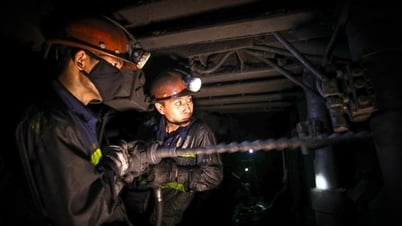






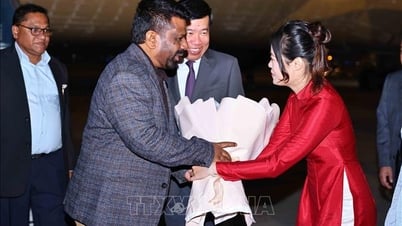

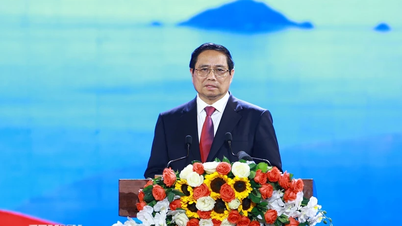

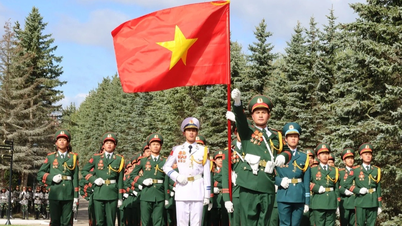

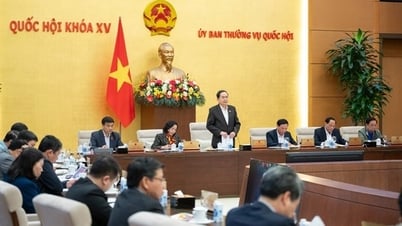
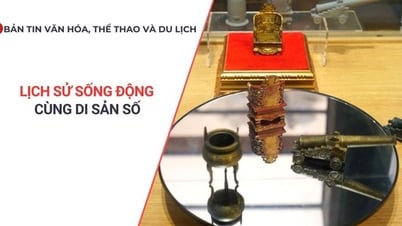








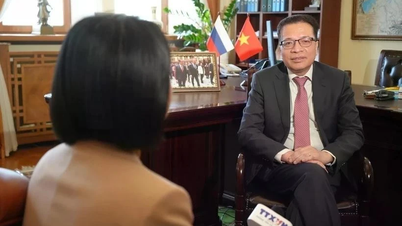

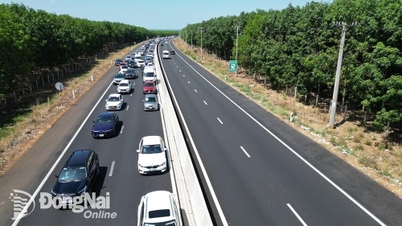



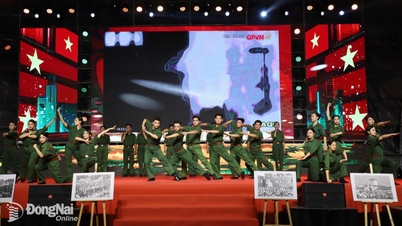
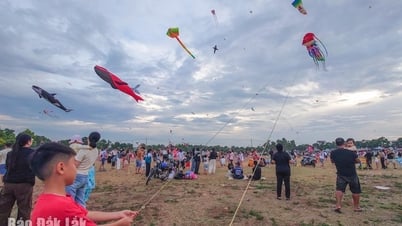

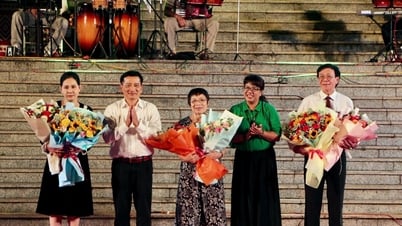




![[Video]. Building OCOP products based on local strengths](https://vphoto.vietnam.vn/thumb/402x226/vietnam/resource/IMAGE/2025/5/3/61677e8b3a364110b271e7b15ed91b3f)

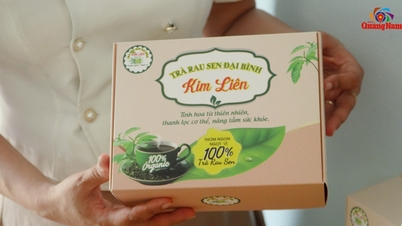

Comment (0)